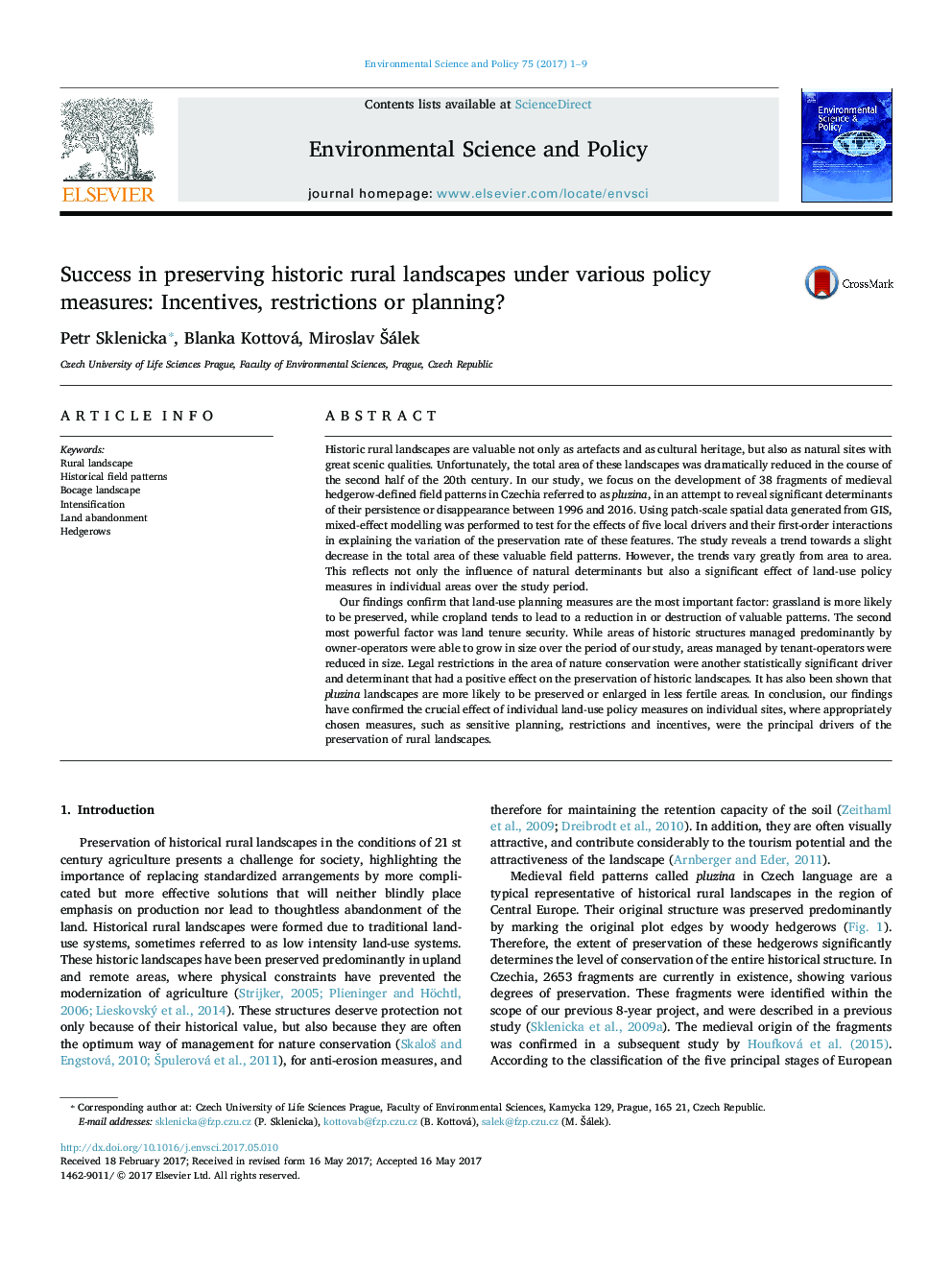| Article ID | Journal | Published Year | Pages | File Type |
|---|---|---|---|---|
| 5115786 | Environmental Science & Policy | 2017 | 9 Pages |
Abstract
Our findings confirm that land-use planning measures are the most important factor: grassland is more likely to be preserved, while cropland tends to lead to a reduction in or destruction of valuable patterns. The second most powerful factor was land tenure security. While areas of historic structures managed predominantly by owner-operators were able to grow in size over the period of our study, areas managed by tenant-operators were reduced in size. Legal restrictions in the area of nature conservation were another statistically significant driver and determinant that had a positive effect on the preservation of historic landscapes. It has also been shown that pluzina landscapes are more likely to be preserved or enlarged in less fertile areas. In conclusion, our findings have confirmed the crucial effect of individual land-use policy measures on individual sites, where appropriately chosen measures, such as sensitive planning, restrictions and incentives, were the principal drivers of the preservation of rural landscapes.
Related Topics
Physical Sciences and Engineering
Energy
Renewable Energy, Sustainability and the Environment
Authors
Petr Sklenicka, Blanka Kottová, Miroslav Å álek,
